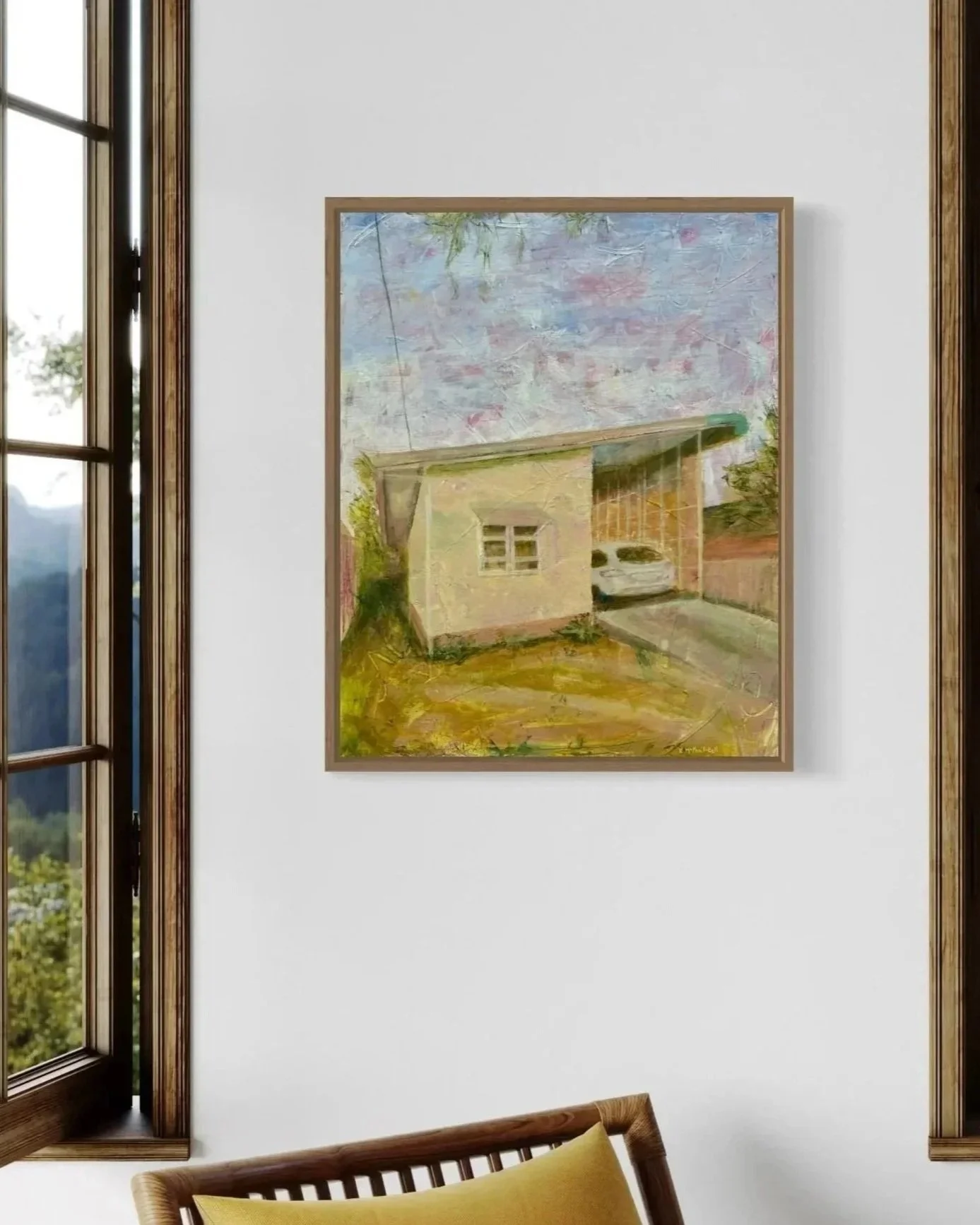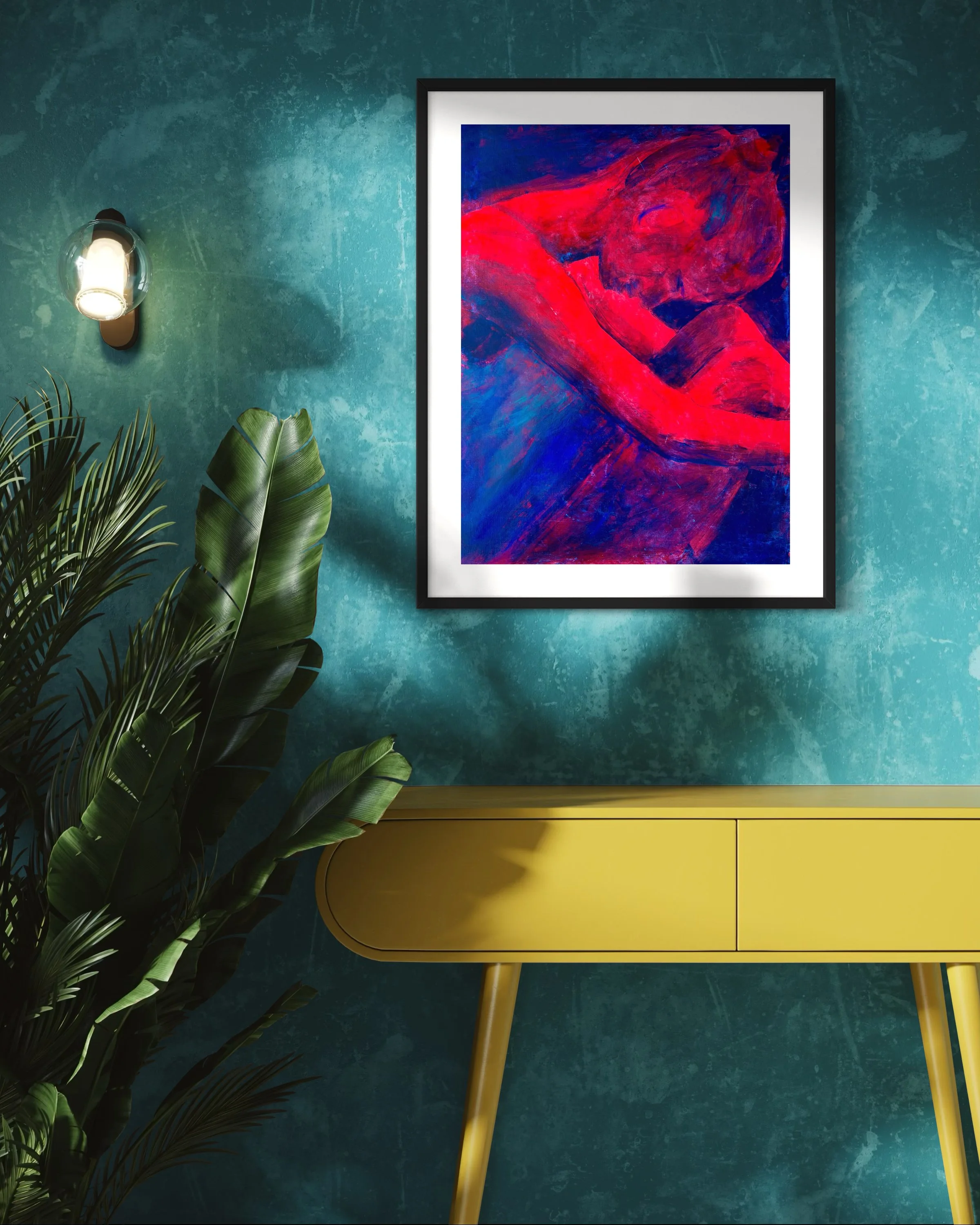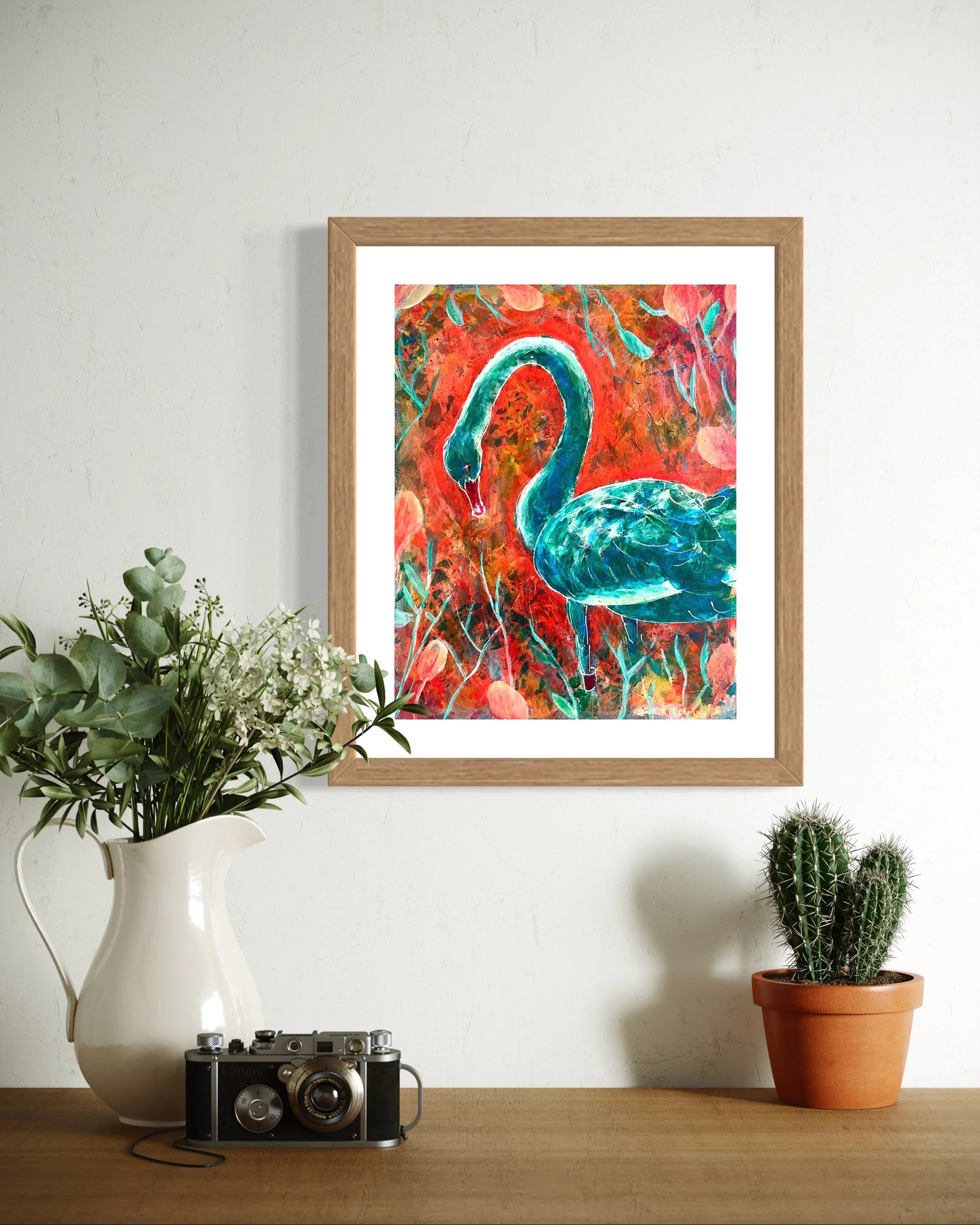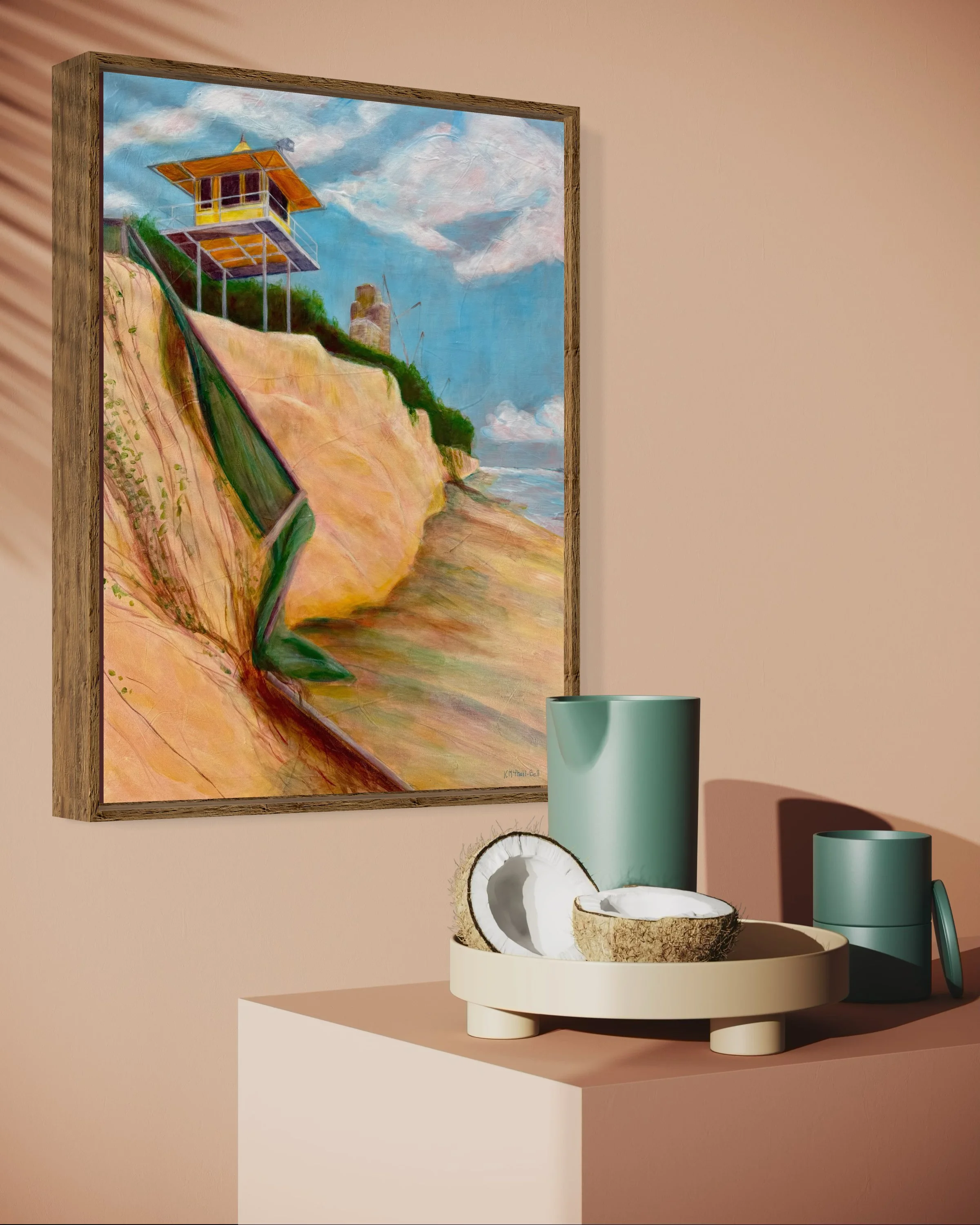Lessons from our mother-daughter art show, “Let Colour Speak” (Part 2)
TL;DR:
Review and reflection after completing a creative project helps to identify lessons learned and inform what’s next.
Our duo art exhibition fostered cultural appreciation, community connection and placed-based creative experiences. It also presented challenges in terms of lighting and energy demands.
By collaborating and connecting with a local audience, this show helped me to develop and grow as an artist. Our collaborative method is now documented so that others can replicate or adapt it too.
Do you have a practice of reflecting after completing a project or body of work? What approach works best for you to identify lessons and growth opportunities?
With the completion of our mother-daughter duo art exhibition, “Let Colour Speak”, I am reflecting upon what I learned and my practice moving forward - a bit like an evaluative ‘pause’ - over three sections:
What went well?
What didn’t go so well?
What did I learn?
I share my insights here in the spirit of supporting other creatives showing their work, as well as to welcome any curious art lovers into the process. I would also love to learn from you, so please share your suggestions and experiences in the comments!
This blog post is Part 2. In Part 1, I shared how we organised our art exhibition.
What went well?
Colour as a constraint provided creative freedom
Mum (Jennie Bell) and I had immense fun conversing with colour to create this body of work. With colour our constraint, we enjoyed freedom to paint whatever subject and style we felt drawn to. This constraint meant that colour informed our subject choice rather than the other way around, as we might typically do - which was a challenge! To adapt, our creative practices were extended to new ways of working, requiring continuous experimentation, and I enjoyed reaching new levels of glazing and layers for colour vibrancy.
Our mother-daughter collaboration with colour is also now a documented, unique methodology available for other creatives to use and adapt. As a methodology, it permits depth and breadth across subjects and stories, while cohering around a core theme of colour speaking in the process.
Fostering cultural appreciation and place-based creative experiences
At the local level, I had two objectives with our show:
Deepen community connection and foster cultural appreciation through arts-based storytelling
Expand access to meaningful, place-based creative experiences
I share examples of the ways our exhibition and community arts activity achieved these objectives.
The premise of a mother and daughter responding to colour together prompted numerous visitors to share about their own relationship with their mother and/or their daughter, or close relationships generally. We heard a spectrum of positive and challenging experiences. A number of visitors also expressed their intention to replicate or adapt our collaboration with colour with their loved ones. Overwhelmingly, the mother-daughter collaboration touched a lot of visitors.
“I loved the sense of family, individuality and culture. Such a beautiful show of the bond of mother-daughter.” – visitor feedback
Throughout each day, the artworks provoked rich, deep conversations that spanned topics including spirituality, environment, friendships (with humans and non-human animals), cultural values, memory and history, climate change and more. We shared the artworks’ stories with any visitor who wanted to go beyond the didactics, often hearing new and personal stories from visitors in response.
“Loved seeing the colour palettes. Thank you for explaining your art, love your process and the stories. xx” – visitor feedback
Some paintings drew out community connections to particular local issues and allowed for education and engagement regarding environment, culture and endangered wildlife. For example, my painting, “One Black Swan” drew support from the local rescue group, Save Our Swans, while our community arts activity equipped young swans advocates with an arts-based method to educate and engage their school in protecting the swans.
“Love the exhibition, very talented artists with a strong relationship between each other… Big shout out to Karen’s ambition towards the black swans and Save Our Swans… the ‘One Black Swan’ artwork was a standout, and the concertina activity.” - young visitor’s feedback
Exhibiting the colour palettes with related works provided visitors with the chance to engage with art in new, deeper ways, going beyond “just pictures”. The colour palettes and colour recipes enabled conversations that could also explore texture, composition and story. It was an experience difficult to replicate online - even going beyond language barriers, with some visitors who couldn’t speak English: together, we talked through art!
“A wonderful journey through story-telling 🙂 It was insightful to hear the inspiration, the process and the varying approaches to the simplest of palettes. Congratulations to you both!” – visitor feedback
The artist talk as community engagement
On our show’s third day, we held a Friday lunchtime artist talk. I received feedback that the lunch break timeslot was appreciated. Our attendance of over 60 was from a range of age groups and postcodes as far as North Brisbane.
For our talk, Mum and I responded to broad topics we identified earlier, and then opened up to audience questions. The audience posed more questions than I can count, about particular artworks, how we collaborated, how we prioritised art in our daily lives, how we incorporated mixed media, and more. I had two sales at this event, including one of our collaborative paintings. People lingered afterwards and we received overwhelming positive feedback.
“Just amazing and so inspiring. Love the work, the journey - stories. Well done. Thank you!!” – Visitor feedback
“Wonderful with so much variety and back stories.” – Visitor feedback
Community arts promoted connection and creative recovery
Our mixed media concertina arts activity provided a format for visitor connection with each other and their own creativity. The activity ran as planned, linking to the concertina on display. Children and adults alike enjoyed the activity, providing another way to reflect on how colour and art speak in their lives.
“A brilliant exhibit by two beautiful creatives! We really enjoyed being able to join in the creation process and trying to make our own art ♥️” – visitor feedback
The added layer of my background as a coach (including in arts-based coaching) and mum’s as an art therapist also meant that our arts table became a space of healing and growth for some, supporting people to reconnect with their creativity and move through recovery from burnout.
“Thank you so much for creating such a beautiful safe space to connect, explore and play. The past two weeks with you have been transformational for me as I reconnect to my creativity - letting colour speak to me again. I’m so grateful.” – visitor feedback
Printed and online materials supported engagement
I was surprised at the number of people who said they enjoyed our artist statement, bios and didactics. It goes to show that people do read them and like doing so!
“What a delight - such contrasting works - loved the write up and descriptions giving greater understanding of each painting. Brilliant work!” - visitor feedback
Numerous people also shared their appreciation that we had art greeting cards and postcards for sale, saying art would otherwise be unaffordable for them. Our business cards and show flyers were also a way for people to take something free.
Our virtual show videos and shorts have between them received 8,500 viewers on my YouTube channel, at the time of publishing. I have received feedback from a number of people in Australia and overseas how much they have appreciated the opportunity to be part of our show from afar. I also posted daily on my Instagram account during our exhibition from the Robina Art Gallery, which supported engagement with the show online.
What didn’t go well?
Venue lighting
While the gallery is an amazing venue, its lighting was challenging for presenting the artworks. Immovable spotlighting meant that we needed to rehang our show once first hung (we first assumed the spotlights could be adjusted). Even after rehanging, a number of artworks remained spotlighted in a way that over-exposed some areas, while darkening others. We found no way around this and the dim ambient lighting meant turning the spotlights off was not an option.
The photographer I hired for the artist talk struggled with lighting too, with raw images coming out overly dark. They edited to correct for the lighting but some images flattened the artwork’s vibrant colours. While I was left with a slim selection of suitable images for promotion of my solo practice and art, we do have a few lovely duo images of mum and I - and the lessons learned will help for future projects.
Physical and energy demands
While a privilege, 14 days straight of deep conversations was physically and energetically demanding for us both. Running a community arts activity simultaneously no doubt contributed to the energy demands. In future, we would offer the arts activity within a shorter time window each day and possibly have a day or two without the activity.
The gallery’s air conditioning didn’t work on weekends (without council staff present to turn it on). It got very hot in the gallery with some particularly hot weather during our show, making days difficult to sustain energy too.
Technical challenges
To create the online exhibition, we used my iPhone to video each other. Holding the phone up was painful for mum with her physical challenges. Our adaptation was to film in short sessions, which meant we missed quiet moments when we could have filmed. Videoing to a planned schedule proved difficult because we had non-stop visitors - also meaning we couldn’t complete recording on the days I dressed up for filming :-)
We would have loved to record us talking together in front of the camera, but I did not have the equipment for us to do that ourselves, nor an assistant who could film us.
In a venue with a lot of background noise, it would be beneficial to have a microphone, particularly for mum’s softer voice. I have generally been able to use editing software to adjust the volume.
Storage of video footage was an issue: my iPhone became full and wouldn’t allow me to record any photos or videos. I addressed this by moving a large amount of footage off my iPhone onto a hard drive. With plans to continue creating virtual experiences and YouTube videos in future, having sufficient video/image storage is a key learning.
What did I learn?
Connecting my art with others helps me grow creatively
Like many visual artists, I am immensely content to paint alone for extended periods (what a rarity that is!). Yet, for me, the creative cycle completes when others are involved, including when the artwork finds its new home. In that regard, enabling my art to connect with a Gold Coast audience and environment gave me both increased visibility and signals about what resonates in my art.
Our exhibition also allowed me to develop my curation skills in a community gallery context, build connections with key supports such as framers and local council, strengthen my artist network and develop my ability to present an online exhibition. Additionally, Mum and I could cross-pollinate our audiences, which helps to sustain and continue our creative contributions on the Gold Coast and beyond.
My collaboration with mum was particularly special. We helped each other from start to finish. We even were able to experiment in co-creating individual paintings together, which we loved doing and aim to continue. The visitor responses to our collaborative pieces were also very positive, leaving a shared creative memory.
Blending commercial and community art agendas
At times, earning a living from my art can feel at odds with my values around making art accessible to all who want to engage with or create it. In this way, the Arts Development Fund grant made a key difference: by covering my costs, I could focus on creating a body of work, presenting and promoting it, and benefiting the community through our show. While we would have loved more sales, the gallery is part of a community centre - not a commercial gallery - where sales are not core business. So, with the support of the GCCC by way of the grant and gallery venue, we could deliver a show that benefited both my creative practice and the community, while being financially viable.
Moving my inspiration forward
I continue to explore themes tied to local history, identity and change of our socio-ecological environment through my painting practice. I am researching Burleigh’s history, and nearby areas, with a particular focus on the continued terraforming taking place since colonisation began. Where I live was once a swampy marsh, as is the case for many of the beach shacks and the newer coastal lux mansions and hotels. Yet much of that part of who we are has been forgotten and built over.
While searching for the visual story here, I am ‘thinking through my materials’, examining our social narratives for what is left out and kept in and experimenting with ways to visually reflect that. I also have visions to extend the socially engaged element of my practice - building upon my process behind Liberated but tied more explicitly to the Kombumerri lands where I live.
In many ways, my art practice is an extension of my ethnographic and public health training, igniting questions to explore:
How might my painting practice honour the past, present and future through reciprocity and respect, while challenging the hegemonic norms here on Kombumerri country?
How might my creative practice cultivate space and relationship with Indigenous-led agendas here, and co-create something with shared benefit?
How might my painting practice contribute to decolonising the land where I live… and is that even possible?
How might a solo studio painting practice look for an artist with such relational agendas?
Extending the impact of my work
Beyond these explorations, I question ‘where next?’ to exhibit my work and connect with art customers in this setting. The Gold Coast art market is different to that where I lived in California and I’m still learning where my work ‘fits’.
I am asking my work what it needs to be suited to gallery representation - and whether my work is the ‘gallery’ kind (and if not, then what is it?)? Perhaps the question is more about who might I collaborate with, such as online platforms, organisations, local businesses, community groups, and even state or federal government partnerships? But let’s not forget the most important thing: paint!
Final thoughts
I’m incredibly grateful for all the support and love shown to us and our show, and for the opportunity to grow as an artist. I absolutely loved connecting my work with a local audience and know that collaboration and partnership is what made it possible to bring our visions to life.
I now have more questions than answers about my practice but I love a good question - it opens up new possibilities and pathways - so let’s see where it takes me and my work!
If you haven’t read Part 1 yet, jump over here and dive in.
Has a recent creative project given you a chance to grow and learn new things? What aspects of review and reflection work for you - or don’t? Do you have suggestions or reflections about what I learned?
Please share below in the comments!
The Arts Development Fund is a City of Gold Coast Council fund that supports the Gold Coast’s creative community by fostering professional pathways and skills development, contributing to our city’s vibrant lifestyle.
Visit my shop - art makes a beautiful gift for the holiday season!
I am committed to honouring the wellbeing, creativity and leadership of every person. If I can help you or your team with this journey please reach out by contacting me here. Learn more about my coaching services here and workshops and facilitation here.





